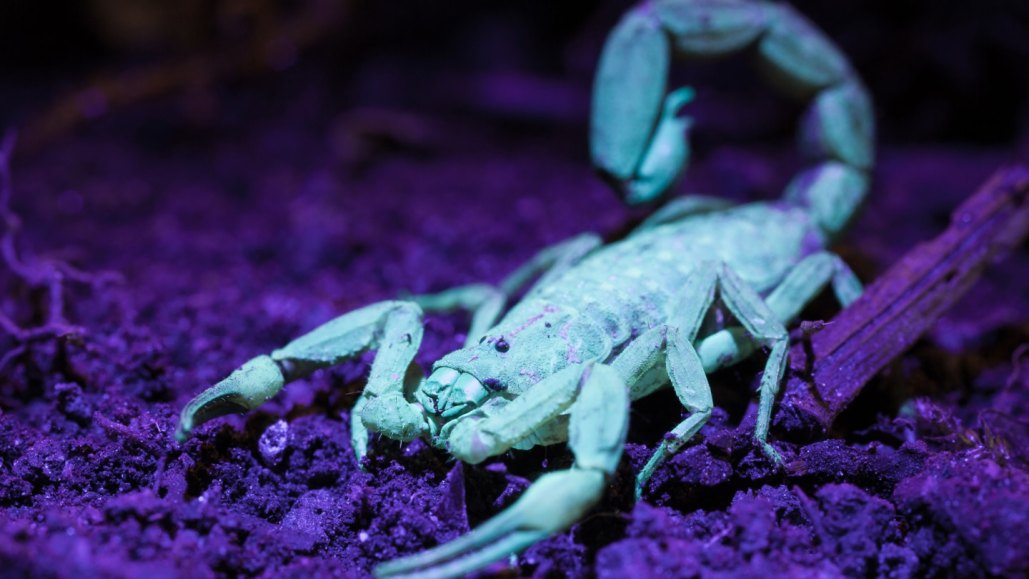Amateur Naturalists Uncover 15 New Instances of Bioluminescent Creatures

This Halloween, it’s time to see scorpions, millipedes and other creepy crawlers in a new light.
Using ultraviolet flashlights and light-filtering glasses, a group of community scientists is documenting flickers of fluorescence in these and other terrestrial creatures. Observations from around the world have illuminated at least 15 new examples of biofluorescence, biologist Courtney Whitcher and her colleagues report October 24 at bioRxiv.org.
Flashy finds include a Japanese beetle with a glowing blue mouth, a mushroom that gleams bright red underneath its cap and a ball python with scale patterns glinting orange. There’s “a glowing world that’s all around us that we just don’t always have the ability to see,” says Whitcher, of the University of Houston.
Biofluorescence occurs when chemicals inside living organisms absorb light and then emit it at a lower energy. Many animals take in UV light, for example, and shine out light that’s visible to the human eye (SN: 8/28/24). Scientists have long observed biofluorescence in underwater animals such as corals and fishes. But when it comes to terrestrial life, researchers are mostly in the dark.
After scientists reported the first fluorescent frog in 2017, Whitcher began cataloging instances of fluorescence in more than 150 frog species (SN: 8/13/23). The phenomenon was ubiquitous. She wondered just how much of life on land was glowing beneath our noses. In 2020, Whitcher’s team created Finding Fluorescence, a website where people can upload images of fluorescent geckos, lichen, moths and other critters they’ve discovered.
People can venture out at night and shine a black light in their own backyard, a nearby park or even at houseplants sitting on their windowsill. (Chlorophyll, the pigment that makes plants appear green, fluoresces red under UV light.) The bounds are endless, Whitcher says.
Her team analyzed 36 submissions to the website, then dug through the scientific literature to find which instances of fluorescence had never been reported. One included a squirrel tree frog striped glimmering green under UV light. Whitcher is now investigating if that fancy stripe influences females’ decision to give males the green light.
Beyond shedding light on the full spectrum of land animals’ colors, Whitcher hopes the website inspires people of all ages to hunt for hidden hues. “As kids, we start off with this wonder and curiosity about the world, and sometimes it gets lost,” she says. Finding Fluorescence is a “way to bring some of that childhood spark back.”




